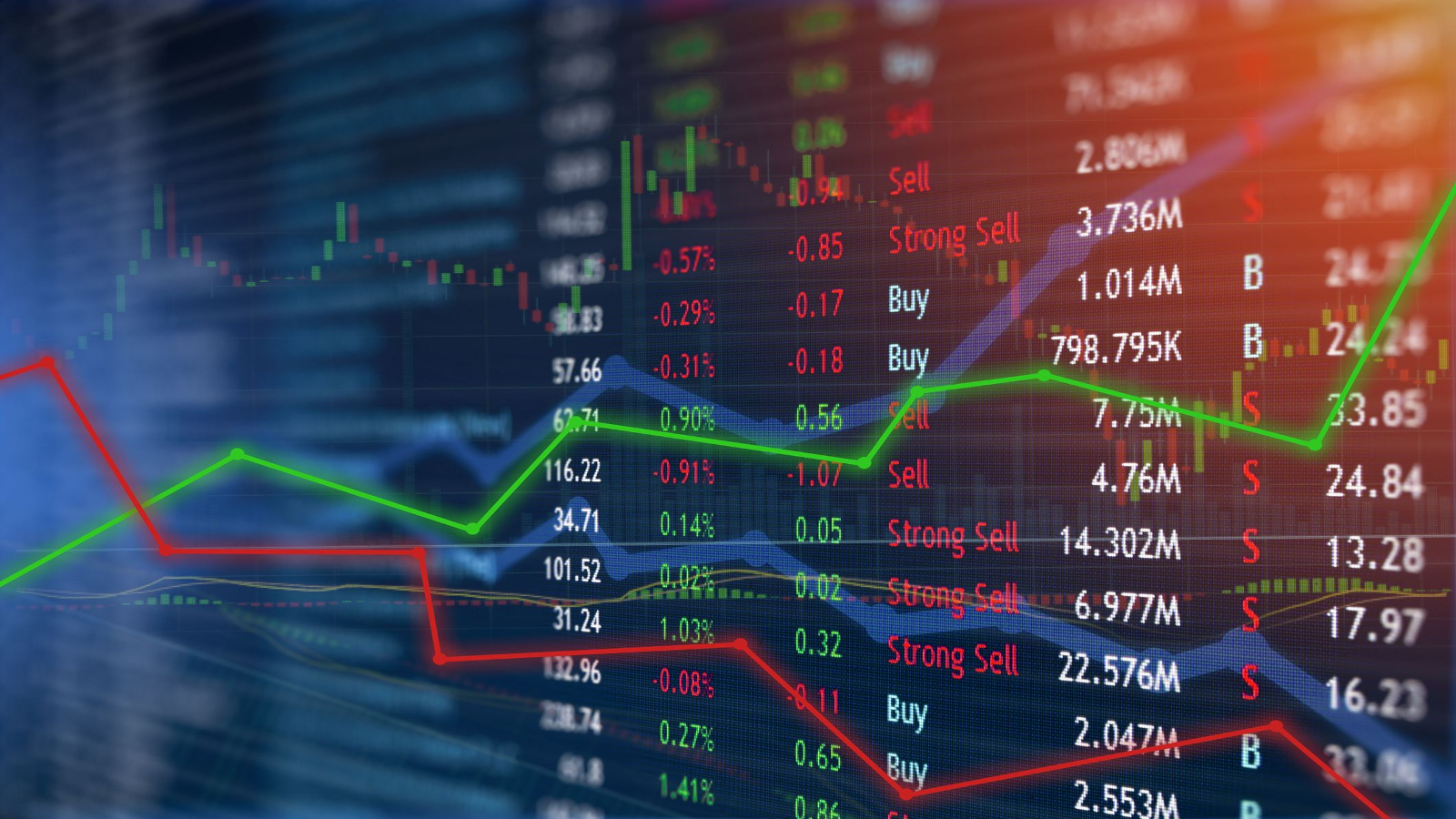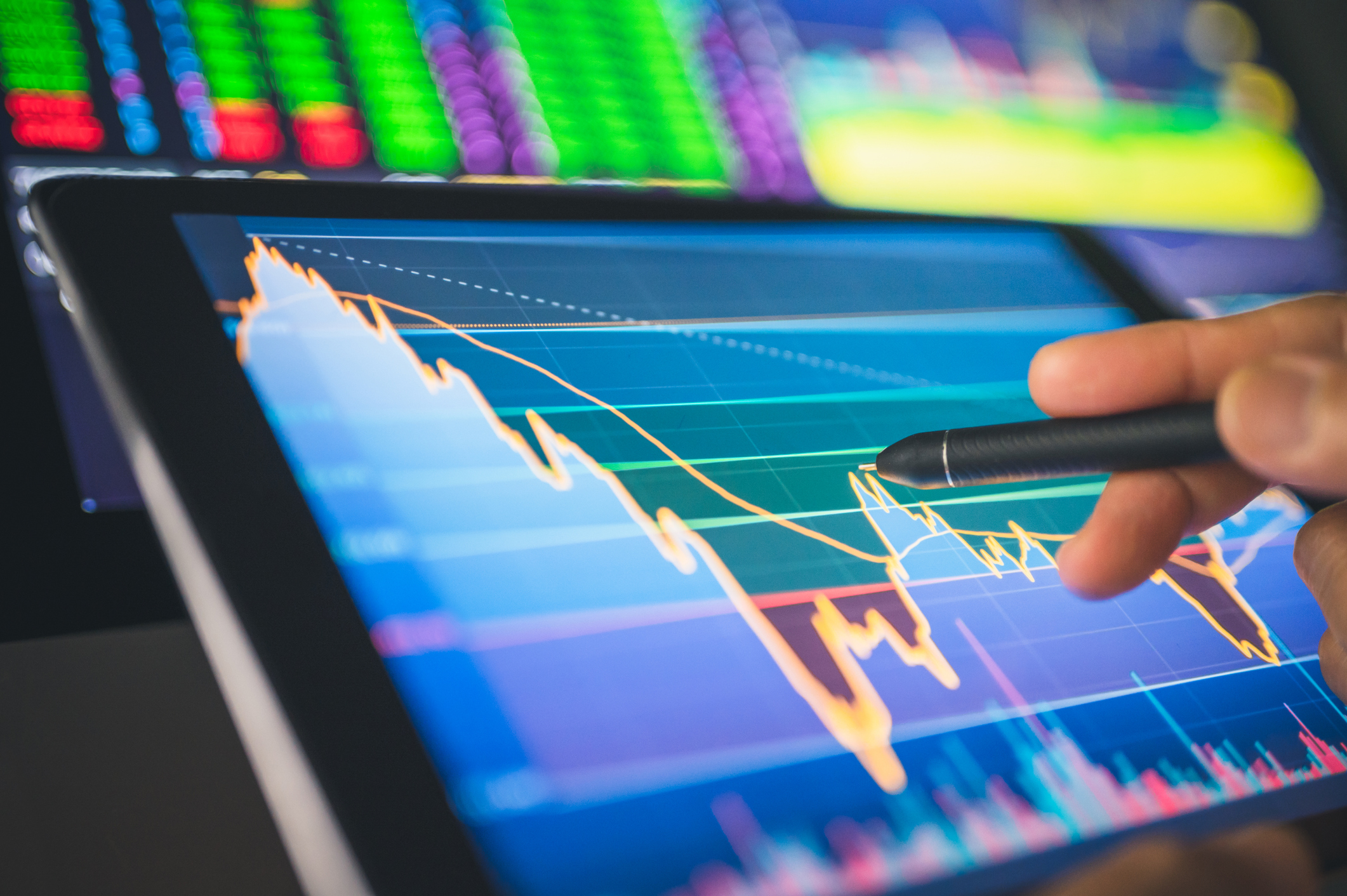Stock Market Today: Stocks Waver Near All-Time Highs Ahead of Fed Rate Cut
Equities were torn between discounting a quarter-point cut and a half-point cut to interest rates tomorrow.



Stocks wavered near all-time highs Tuesday as market participants argued over the size of the Federal Reserve rate cut expected tomorrow afternoon. Some mixed economic data also left equities searching for direction.
The Federal Reserve is going to cut interest rates at the next Fed meeting, experts say. Only the size and pace of the central bank's easing campaign remain in doubt.
The Federal Open Market Committee wraps up its regularly scheduled meeting Wednesday with a policy statement to be issued at 2 pm Eastern. While the FOMC is almost certain to lower borrowing costs from a 23-year high, the size of the reduction remained a matter of hot contention during Tuesday's session.
From just $107.88 $24.99 for Kiplinger Personal Finance
Become a smarter, better informed investor. Subscribe from just $107.88 $24.99, plus get up to 4 Special Issues

Sign up for Kiplinger’s Free Newsletters
Profit and prosper with the best of expert advice on investing, taxes, retirement, personal finance and more - straight to your e-mail.
Profit and prosper with the best of expert advice - straight to your e-mail.
As of September 17, interest rate traders assigned a 65% probability to 50 basis points (bps) of cuts, or half-a-percentage point, according to CME Group's FedWatch Tool, up from 34% a week ago. Meanwhile, the probability of a quarter-point cut fell to 35% from 66% last week.
"I expect the Fed to cut by 25 basis points, not 50," writes Kristina Hooper, chief global market strategist at Invesco. "A 50 basis point cut would raise alarm bells about the state of the U.S. economy. Recall that the Fed started a brief easing cycle with a 50 basis point cut in March 2020 with the global pandemic upon us; it would be very hard to argue that the situation is so dire now and necessitates a 50 basis point cut."
Hooper adds that even when the Fed began raising rates to fight inflation in March 2022, it didn't start with a 50 basis point hike.
By the closing bell, the blue chip Dow Jones Industrial Average was off less than a tenth of a percent at 41,606, while the broader S&P 500 was essentially unchanged at 5,634. The tech-heavy Nasdaq Composite added 0.2% to end at 17,628.
Retail sales continue to cool
Consumer spending was tepid last month but exceeded forecasts. Data from the Census Bureau showed retail sales were up 0.1% in August from the month prior, beating economists' expectations for a 0.2% decline. Slowing automobile sales pressured the headline number, though this was offset by strong online sales.
"Consumer spending slowed down this month as elevated costs, tall interest rates and reduced credit availability weighed on spending," notes José Torres, senior economist at InterActive Brokers. "The barely positive result comes after a recent trend involving shoppers alternating monthly between splurging and crimping to manage lofty charges and heavy financing costs."
Separately, homebuilder sentiment rose in August after four consecutive months of declines. The NAHB/Wells Fargo Homebuilder Sentiment Index rose to 39 from 41 the prior month, which matched Wall Street expectations. That said, Torres says the reading has "a long way to go" before hitting positive territory on a score of 50 or higher.
Microsoft returns more cash to shareholders
Microsoft (MSFT, +0.9%) helped lift the price-weighted Dow Jones on Tuesday after the tech giant said it would return more cash to shareholders. MSFT announced a new $60 billion share repurchase program and raised its dividend by more than 10%.
Microsoft disbursed nearly $22 billion in dividends over the past 12 months and still had levered free cash flow of $56.7 billion. Even better for long-time dividend-growth investors, Microsoft has hiked its payout every year for more than two decades. If it can keep its streak alive, Microsoft will soon be eligible for inclusion in the S&P 500 Dividend Aristocrats, which are some of the best dividend stocks for reliable and rising payouts.
Please note that although the share repurchase program matches Microsoft's largest-ever authorization, $60 billion represents only about 1.8% of its massive $3.22 trillion market cap.
Related content
- If You'd Put $1,000 Into Microsoft Stock 20 Years Ago, Here's What You'd Have Today
- Stocks With the Highest Dividend Yields in the S&P 500
- Analysts' Top S&P 500 Stocks to Buy Now
Profit and prosper with the best of Kiplinger's advice on investing, taxes, retirement, personal finance and much more. Delivered daily. Enter your email in the box and click Sign Me Up.

Dan Burrows is Kiplinger's senior investing writer, having joined the publication full time in 2016.
A long-time financial journalist, Dan is a veteran of MarketWatch, CBS MoneyWatch, SmartMoney, InvestorPlace, DailyFinance and other tier 1 national publications. He has written for The Wall Street Journal, Bloomberg and Consumer Reports and his stories have appeared in the New York Daily News, the San Jose Mercury News and Investor's Business Daily, among many other outlets. As a senior writer at AOL's DailyFinance, Dan reported market news from the floor of the New York Stock Exchange.
Once upon a time – before his days as a financial reporter and assistant financial editor at legendary fashion trade paper Women's Wear Daily – Dan worked for Spy magazine, scribbled away at Time Inc. and contributed to Maxim magazine back when lad mags were a thing. He's also written for Esquire magazine's Dubious Achievements Awards.
In his current role at Kiplinger, Dan writes about markets and macroeconomics.
Dan holds a bachelor's degree from Oberlin College and a master's degree from Columbia University.
Disclosure: Dan does not trade individual stocks or securities. He is eternally long the U.S equity market, primarily through tax-advantaged accounts.
-
 Stocks Struggle Ahead of November Jobs Report: Stock Market Today
Stocks Struggle Ahead of November Jobs Report: Stock Market TodayOracle and Broadcom continued to fall, while market participants looked ahead to Tuesday's jobs report.
-
 7 Dr. Seuss Quotes Retirees Should Live By
7 Dr. Seuss Quotes Retirees Should Live ByYou're off to great places! Why Dr. Seuss is the retirement guru you didn't know you needed.
-
 Fed's Rate Cuts Could Have Impacts You Might Not Anticipate
Fed's Rate Cuts Could Have Impacts You Might Not AnticipateUnderstanding how lower interest rates could impact your wallet can help you determine the right financial moves to make.
-
 Stocks Struggle Ahead of November Jobs Report: Stock Market Today
Stocks Struggle Ahead of November Jobs Report: Stock Market TodayOracle and Broadcom continued to fall, while market participants looked ahead to Tuesday's jobs report.
-
 Past Performance Is Not Indicative of Your Financial Adviser's Expertise
Past Performance Is Not Indicative of Your Financial Adviser's ExpertiseMany people find a financial adviser by searching online or asking for referrals from friends or family. This can actually end up costing you big-time.
-
 I'm a Financial Planner: If You're Not Doing Roth Conversions, You Need to Read This
I'm a Financial Planner: If You're Not Doing Roth Conversions, You Need to Read ThisRoth conversions and other Roth strategies can be complex, but don't dismiss these tax planning tools outright. They could really work for you and your heirs.
-
 Could Traditional Retirement Expectations Be Killing Us? A Retirement Psychologist Makes the Case
Could Traditional Retirement Expectations Be Killing Us? A Retirement Psychologist Makes the CaseA retirement psychologist makes the case: A fulfilling retirement begins with a blueprint for living, rather than simply the accumulation of a large nest egg.
-
 I'm a Financial Adviser: This Is How You Can Adapt to Social Security Uncertainty
I'm a Financial Adviser: This Is How You Can Adapt to Social Security UncertaintyRather than letting the unknowns make you anxious, focus on building a flexible income strategy that can adapt to possible future Social Security changes.
-
 I'm a Financial Planner for Millionaires: Here's How to Give Your Kids Cash Gifts Without Triggering IRS Paperwork
I'm a Financial Planner for Millionaires: Here's How to Give Your Kids Cash Gifts Without Triggering IRS PaperworkMost people can gift large sums without paying tax or filing a return, especially by structuring gifts across two tax years or splitting gifts with a spouse.
-
 'Boomer Candy' Investments Might Seem Sweet, But They Can Have a Sour Aftertaste
'Boomer Candy' Investments Might Seem Sweet, But They Can Have a Sour AftertasteProducts such as index annuities, structured notes and buffered ETFs might seem appealing, but sometimes they can rob you of flexibility and trap your capital.
-
 AI Stocks Lead Nasdaq's 398-Point Nosedive: Stock Market Today
AI Stocks Lead Nasdaq's 398-Point Nosedive: Stock Market TodayThe major stock market indexes do not yet reflect the bullish tendencies of sector rotation and broadening participation.